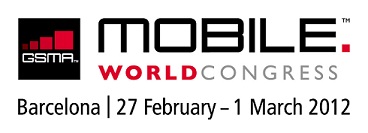Mark Bridge writes:
Mobile World Congress is over for another year. Also gone is the mobile industry’s sudden obsession with public transport and student protests in Barcelona. But away from the local news, what’s been going on?
Well, if you’re asking that, you’ve probably not been listening to our podcasts. James Rosewell and I spent a week in Barcelona, walking round the exhibition halls and talking to some of the 1500 companies present. We produced a podcast every day from Monday to Friday; you’ll find them in the usual places on our website, via RSS and on iTunes.
Two of the week’s biggest stories from Mobile World Congress didn’t have a ‘traditional’ mobile connection at all. Ford turned up with its B-MAX car, complete with the SYNC in-car connectivity system, while Microsoft arrived with a consumer beta version of Windows 8.
Rather more anticipated was the introduction of quad-core chips into smartphones. Huawei was using its own 1.5GHz processor in a smartphone and a tablet, while HTC, LG and ZTE relied on NVIDIA.
ZTE also had a Windows Phone handset... as did Nokia, although its 41 megapixel Symbian phone rather stole the limelight.
Elsewhere in the world of handsets, Sony (without Ericsson) showed off a couple of smartphones, Doro had an easy-to-use device that was based on Android, Intel signed some more smartphone deals and Samsung had a bit of everything.
Despite having no ‘flagship’ device for Mobile World Congress this year – expect to see the Samsung Galaxy S3 in the next few weeks – there were plenty of other Samsung stories, including a projector phone and a car comms deal with Toyota.
Money was pretty high on the agenda this year. Vodafone and Visa talked about their joint plans for mobile wallets, iZettle expanded its reach (and set its sights on the UK) while Facebook and the Wholesale Application Community both discussed operator billing.
Finally, a quick look at the future. The GSMA made a series of announcements about Rich Communication Services at last week’s Mobile World Congress, including the creation of a new consumer-facing brand called joyn. Expect to see the brand used on handsets that let you seamlessly switch between services, such as sending a photo while on a voice call.
And Telefónica Digital revealed plans to create a new mobile platform in partnership with Mozilla. It’s called the Open Web Device platform and will use HTML5 standards to deliver a smartphone-like device without premium pricing. Everything will run as an app in the browser, making this a particularly ‘open’ choice for developers and manufacturers. I look forward to seeing the first OWD handset appearing... perhaps in time for Mobile World Congress next year.
|
Start your week with a reminder of the latest mobile headlines. Simply register at TheFonecast.com by clicking the link at the top right-hand corner of our home page and we’ll send you this weekly news summary by email.
The Fonecast at Mobile World Congress 2012 was sponsored by Good Technology and 51Degrees.mobi. You’ll find more about advertising and sponsorship opportunities on the About us section of our website.
|
